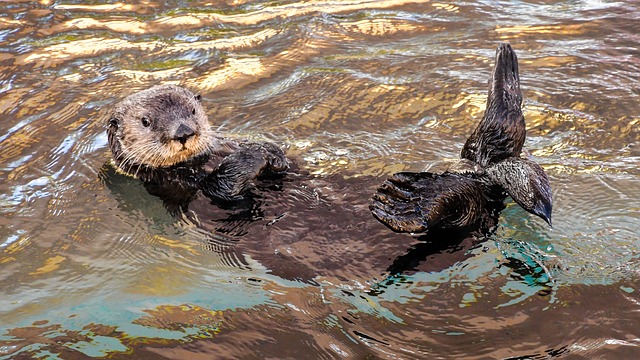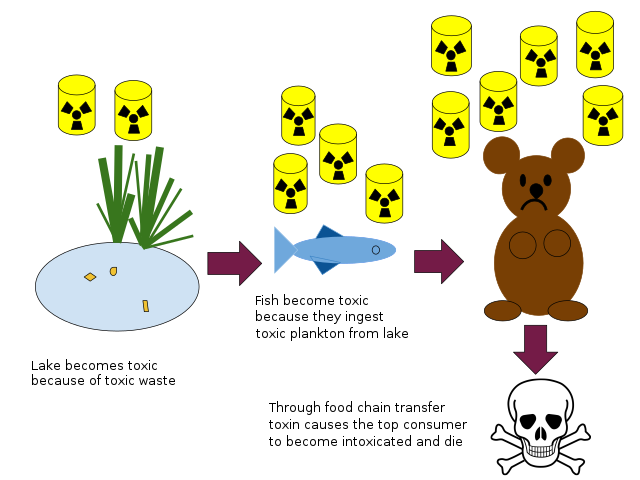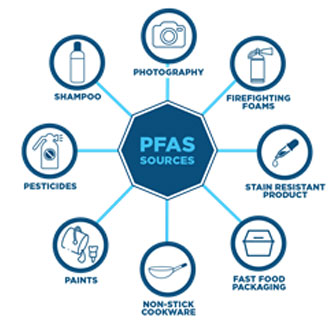 In recent years, water contamination has been in the news for human communities - Flint, Houston, and Las Vegas are just a few examples of cities with poor water quality.
In recent years, water contamination has been in the news for human communities - Flint, Houston, and Las Vegas are just a few examples of cities with poor water quality.
But did you know that water contamination affects many other species on our planet too? The discharge of industrial waste, marine dumping, and oil leaks affect many aquatic ecosystems.
Recently, PFAS or “forever chemicals” are increasingly becoming a health concern for Eurasian otters, especially in British waters. Let's find out more.
Food Web and Toxins
 A food web describes who eats whom in an ecosystem. Every creature in the food web plays a crucial role and even minor changes may disturb the ecosystem.
A food web describes who eats whom in an ecosystem. Every creature in the food web plays a crucial role and even minor changes may disturb the ecosystem.
The otter food web is one such example and is divided into five trophic levels (TLs). Plants and algae (TL 1) are eaten by plankton and snails (TL 2), which are consumed by small fish (TL 3), devoured by larger fish (TL 4), and ultimately ingested by apex predators like otters (TL 5).
When humans release pollutants into the environment, they are ingested by animals. But instead of getting eliminated, these toxins remain in the animal’s body and accumulate - this is known as bioaccumulation.
Additionally, as food passes from one trophic level to the next, each predator gets pollutants from its prey. As a result, apex predators have the largest concentration of chemicals - known as biomagnification.
Otters are more vulnerable to bioaccumulation and biomagnification because they are at the top of the food web and live close to human settlements, refineries, and industries. Effects from pollutants include illness and damage to reproductive and immune systems. Otters are therefore strong indicators of pollution levels in ecosystems.
PFAS: An Everyday Culprit
 Researchers performed tests on otters found dead between 2007-2009 and 2014-2019. They found that 80% of the otters had high levels of a compound called PFAS (Per- and Polyfluoroalkyl Substances).
Researchers performed tests on otters found dead between 2007-2009 and 2014-2019. They found that 80% of the otters had high levels of a compound called PFAS (Per- and Polyfluoroalkyl Substances).
These compounds are used in products to make them grease, stain, heat, and water resistant. Think of non-stick pans, water-resistant jackets, fire-fighting foams, stain-resistant carpets, cosmetics, and more.
Unfortunately, these "forever chemicals" don't break down easily in the environment and have been found in aquatic environments and organisms, and have also been detected in air, soil, and plants.
Marine species are especially vulnerable to PFAS. Scientists have found them in plankton and seawater of the Atlantic Ocean. Elevated levels have been found in alligators, sea birds, bears, and dolphins. According to the CDC, more than 95 percent of the U.S. population has PFAS in their bodies. Tap water of at least 16 million people in 33 states has been polluted by PFAS.
Denmark, Germany, Norway, Sweden, and the Netherlands have set national PFAS limits for water and soil. There are about 5000 PFAS currently in production and manufacturers should phase these chemicals and invest in safer alternatives. Consumers can also use PFAS-free personal care products and cooking materials.
Sources: The Hill, BBC, EPA, NOAA






